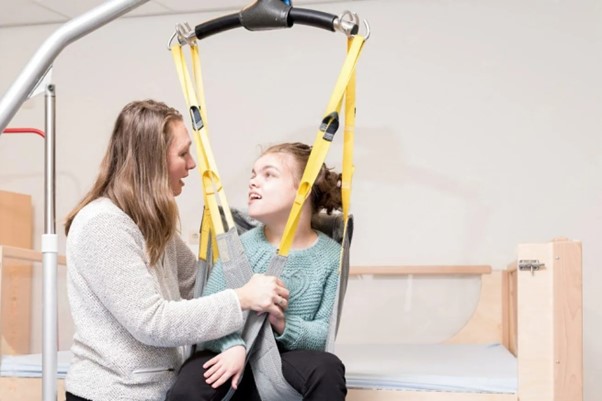Ever wondered about the intricate tapestry of the National Disability Insurance Scheme (NDIS)? It’s more than just a financial lifeline for eligible Australians grappling with disabilities. It’s a mission that transcends mere support and weaves a narrative of enriched lives and vibrant community connections.
From carving out quality time with loved ones to empowering independence and opening doors to new skills, job prospects, and community engagement – NDIS high intensity support elevates the overall quality of life for its beneficiaries. But that’s not all; it’s also a bridge to essential services in local communities. Think doctors, community groups, sports clubs, support networks, libraries, and schools – all at your fingertips.
The NDIS Quality and Safeguards Commission has recently rolled out revamped skill descriptors for high-intensity support, syncing up with the latest trends and expert advice. These descriptors aren’t just words; they’re beacons of guidance for providers and workers navigating the high-intensity daily personal activities (HIDPA) under NDIS high-intensity support.
The emphasis here is on ongoing training and keeping abreast of best practices. These changes, arriving on February 1, 2023 signify the NDIS’s steadfast commitment to nurturing a caring and supportive community for those in need of high-intensity support. Intrigued? Let’s delve into it.
Discovering the depth of NDIS high intensity support
Delving into NDIS High Intensity Personal Activities, commonly known as NDIS high intensity support, reveals a spectrum of dedicated and crucial assistance. These are not merely tasks; they are commitments to the wellbeing of those relying on them. Providers entrusted with NDIS high intensity support understand the gravity of their role, and they work tirelessly to ensure that health professionals possess the indispensable skills and knowledge to offer support securely.
Within this realm, eight specific types of NDIS high-intensity support are available, each representing one area of specialised care:
1. Complex bowel care;
2. Enteral feeding support;
3. Dysphagia support;
4. Ventilator support;
5. Tracheostomy support;
6. Urinary catheter support;
7. Subcutaneous injections; and
8. Complex wound care support.
As NDIS providers navigate their responsibilities, they embark on a journey of thoughtful consideration. When delegating tasks, especially in the context of NDIS High Intensity Support, the focus is not solely on determining the feasibility of delegation, but also on determining the level of support required. This ensures a thoughtful allocation of funding within the High Intensity Support plan, allowing a registered nurse to assess, train, and oversee the worker responsible for executing the delegated task.
The journey through NDIS High Intensity Support recognises three distinct levels, each tied to the number of tasks and the complexity of assistance required: low, intermediate, and high.
In the pursuit of providing aid, it is critical to consider NDIS High Intensity Support. This consideration forms the cornerstone of evaluating and determining the precise level of assistance needed for those relying on this specialised care:
As NDIS providers navigate their responsibilities, they embark on a journey of thoughtful consideration. When delegating tasks, especially in the context of NDIS High Intensity Support, the focus is not solely on determining the feasibility of delegation, but also on determining the level of support required. This ensures a thoughtful allocation of funding within the High Intensity Support plan, allowing a registered nurse to assess, train, and oversee the worker responsible for executing the delegated task.
The journey through NDIS High Intensity Support recognises three distinct levels, each tied to the number of tasks and the complexity of assistance required: low, intermediate, and high.
In the pursuit of providing aid, it is critical to consider NDIS High Intensity Support. This consideration forms the cornerstone of evaluating and determining the precise level of assistance needed for those relying on this specialised care.
Exploring NDIS levels of support
Taking a closer at the intricacies of NDIS High Intensity Support reveals a structured framework categorised into three tiers, aptly termed, ‘NDIS levels of support.’ These tiers are carefully defined to cater to the specific needs of individuals, with the complexity of care escalating progressively from low to intermediate to high.
Low Level Support
Business process modelling helps business owners to facilitate data-driven decision-making. It can help business owners to better visualise processes and enables stakeholders to make informed choices that are backed by a comprehensive understanding of the implications on various aspects of the business.
The two key components of business process modelling
Process identification and mapping
Business process modelling helps business owners to facilitate data-driven decision-making. It can help business owners to better visualise processes and enables stakeholders to make informed choices that are backed by a comprehensive understanding of the implications on various aspects of the business.
Performance metrics and analysis
Understanding the importance of defining key performance indicators (KPIs) and leveraging them for process analysis is critical. This can help contribute to continuous improvement and align with your overall business goals.
Tips for successfully implementing business process modelling in your business
Choose the right tools
If you are interested in implementing business process modeling in your business, a good place to start is by delving into the array of business process modelling tools available on the market and selecting the one that feels right for your business.
You will benefit here by having a sound understanding of how technology complements business process modeling by providing real-time monitoring and automation capabilities.
Ensuring successful adoption
There are certain challenges that business owners might face when implementing business process modelling in their business. However, there are strategies that you can use to help ensure a seamless adoption of business process modeling in your business. This can be enhanced with business process modelling (including change management training) and by fostering a fostering a culture of innovation.
Are you ready for business process modelling?
Business process modelling is not merely a theoretical concept; it has been proven to be a strategic asset for organisations seeking operational excellence. Whether you are a seasoned professional or new to the world of business process modelling, the insights shared here above can help provide a solid foundation for harnessing the power of business process modelling in your business.
“The opinions expressed by BizWitty Contributors are their own, not those of BizCover and should not be relied upon in place of appropriate professional advice. Please read our full disclaimer."







